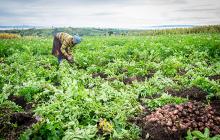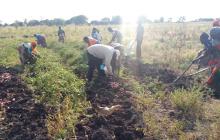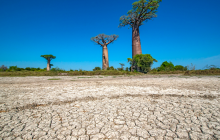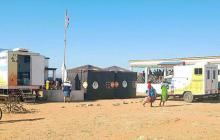Using Data to Respond to the Impacts of Climate Change
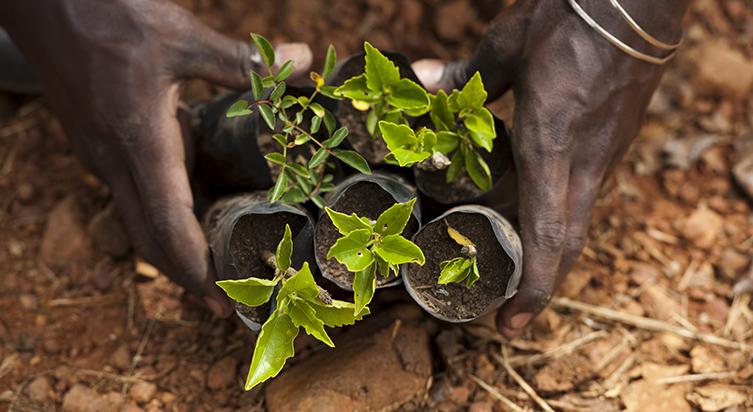
The impacts of climate change—including higher temperatures and extreme weather events—are already affecting the health, economic well-being, and security of people across the globe. Not only will these effects continue to grow over time, but they disproportionately affect the most vulnerable, who have the fewest resources to adjust.
In this Q&A, Principal Economist Juan Bonilla describes AIR’s efforts to help governments and policymakers mitigate these effects and reduce the growing inequities that climate change can exacerbate.
Q: What has AIR learned about how climate change affects everyday people?
Bonilla: Most of us know and accept that climate change is happening in all parts of the world and manifesting in different ways. The evidence shows that human activities are affecting the climate worldwide and producing heatwaves, heavy precipitation, droughts, floods, tropical cyclones, and increases in sea levels. But some of the ripple-effect consequences of climate change are lesser known. First, our work shows that higher temperatures and more extreme weather are linked to increased conflict and increases in food insecurity. For example, droughts or floods may force people to migrate to new areas where they need to share resources with local populations, which can stir tensions. Climate change can also result in negative economic consequences, especially for marginalized populations, including areas in humanitarian settings.
Our work shows that higher temperatures and more extreme weather are linked to increased conflict and increases in food insecurity. For example, droughts or floods may force people to migrate to new areas where they need to share resources with local populations, which can stir tensions.
Secondly, many people don’t realize that the effects of climate change do not affect all of us equally. For example, Africa is not a significant source of greenhouse gas emissions; it accounts for only 2-3 percent of the world’s carbon dioxide emissions. However, this continent is among the most vulnerable places to the effects of climate change. According to State of the Climate in Africa report, a multi-agency publication coordinated by the World Meteorological Organization, Africa is experiencing large temperature increases. The frequency and intensity of drought seems to have already worsened in many parts of the continent. Through our work in the Famine Early Warning Systems Network (FEWS NET), we have identified the large number of countries in Sub-Saharan Africa that are projected to face severe food insecurity and even famines in the near term. (Note: FEWS NET is a project of Kimetrica, a wholly owned subsidiary of AIR.)
And Africa is not alone. Other developing countries in Asia and Central and South America are also highly exposed and strongly impacted by climate change. The changing rainfall patterns have made the lives of agricultural producers and households more difficult not only because they significantly affect the quantity of food produced, but also because changes in weather increase pests and diseases, which pose new and bigger risks to the global food systems.
Q: How does AIR’s work address climate change?
Bonilla: At AIR, we work in key complementary areas related to climate change. First, through our work in FEWS NET, we manage, maintain, and improve data that help provide early warnings and analysis on acute food insecurity around the world. These data help governments and relief agencies to effectively respond to humanitarian crises, including the ones caused by climate change.
In cash transfer programs, targeted families receive a small amount of cash on a regular basis, allowing them purchase food, invest in agriculture, improve their shelter, and pay for medical and education expenses.
Learn more about AIR’s cash transfer program evaluations.
Second, our data science team works on crop simulation models to generate reliable evidence on the effects of climate change on crop production. These reliable predictions help policy makers to develop response strategies for years of crop shortfalls, which could limit the likelihood of famine and food insecurity due to climate change.
Lastly, we conduct impact and process evaluations of agricultural and social protection programs and policies that can ultimately improve household resilience and food security in areas that are highly exposed to the effects of climate change. Some of our evaluations include programs related to emergency cash transfer or integrated social protection programs in drought-stricken countries; programs that promote the adoption of drought-resistant crops; or programs that use digital solutions to provide farmers with timely and scientifically sound information that can help improve agricultural production and food security in the presence of varying conditions, including climate change.
Q: What does the future of climate change research look like?
Bonilla: There are many areas in which more research is needed to fully understand how households respond to the effects of climate change and which policies and interventions are most effective.
Crop Modeling is a tool that complements large-scale surveys on agricultural outcomes. Read about AIR's crop modeling project in Kenya.
First, we need to keep designing and evaluating interventions that can help vulnerable households and farmers to be more resilient to the effects of climate change. Some interventions recommend the adoption of climate-smart agriculture practices, such as retaining crop residues for soil fertility, disturbing the soil as minimally as possible, using drought-resistant seeds, or crop diversification through rotation or intercropping. Cash transfers are also a promising tool to build resilience and help manage risk. However, the successful adaptation of solutions varies from place to place and involves many trade-offs. There is no silver bullet that works in all contexts and for all kinds of households. More importantly, the research in technology adoption shows that participants frequently cease recommended practices after programs end. Thus, there are significant research gaps around ensuring that effective practices are sustained over time.
More research is also needed in climate risk management. Even if governments, communities, and households have access to good and timely information to help prepare for and anticipate weather-related events, not all climate related risks are predictable in terms of their intensity and duration (e.g., droughts, floods, cyclones/hurricanes, fires, pests, and diseases). There are risk management solutions, such as accessible financial tools and farmers’ insurance in developing countries, but the use of these tools remains low despite the agricultural sector’s high vulnerability to the impacts of climate change. Therefore, more research is needed to identify and structure instruments that can help households and farmers engage in solutions that transfer risk that is not fully manageable.
